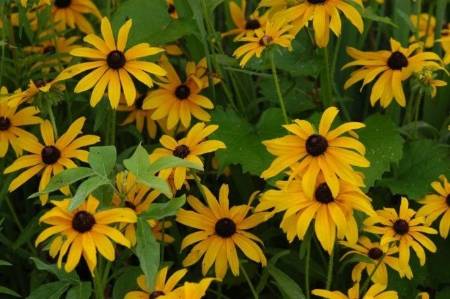Black Eyed Suan

The Black-eyed Susan is a native of the United States and the Great Plains. It can commonly be found in open woodlands, prairies, fields, and waste areas across the state. While technically a perennial, this flower tends to be a short-lived plant in some areas; however, it freely self-seeds, so it rarely dies out. The common name originates in an old English poem, 'Sweet Williams Farewell to Black-eyed Susan,' which discusses how the Sweet William plant and Black-eye Susan bloom beautifully together. The Black-eye Susan is known for its daisy-like flowers with petals ranging in color from bright yellow to burgundy red and several combinations in between. All varieties have the characteristic dark brown to black cone in the center, giving the flower its name. Black-eyed Susans are a fairly hairy plant. The species named hirta means hairy and refers to the short bristles on the leaves and the stem. This pollinator plant has few insect or disease issues outside of the occasional bout of powdery mildew under very humid conditions. Use this plant in wildflower or cottage gardens as a mass of color for the best effect, or use shorter varieties as a border of a flower bed.

Have questions? Contact our office where our Horticulture Extension Agent will assist you with questions.
Phone: (316) 321-9660
Email: callae@ksu.edu